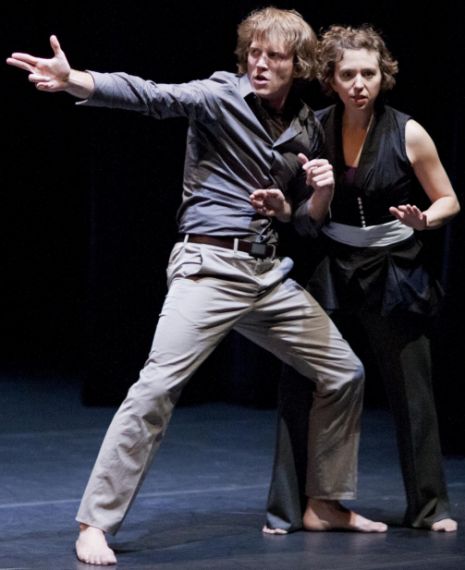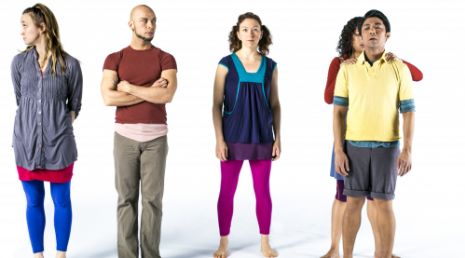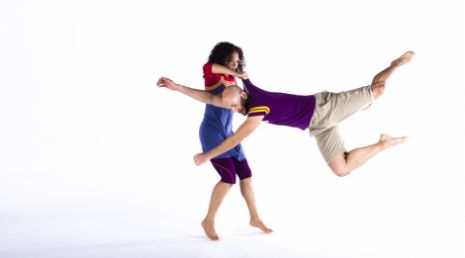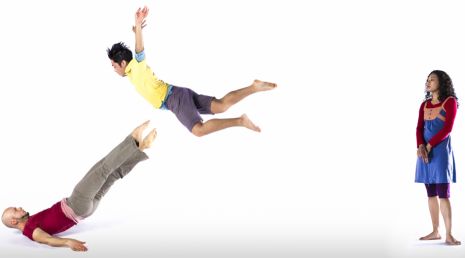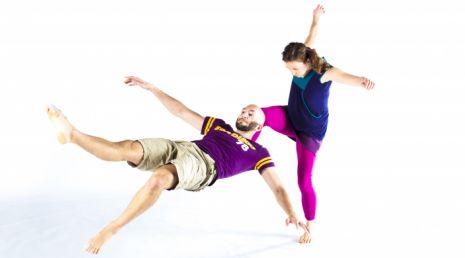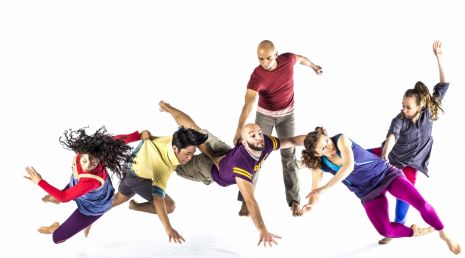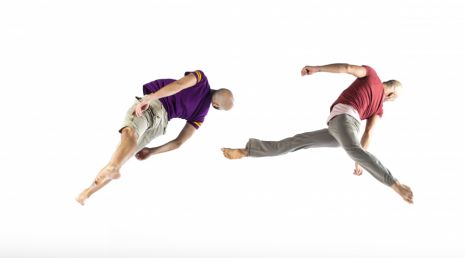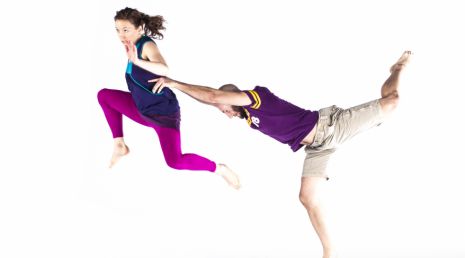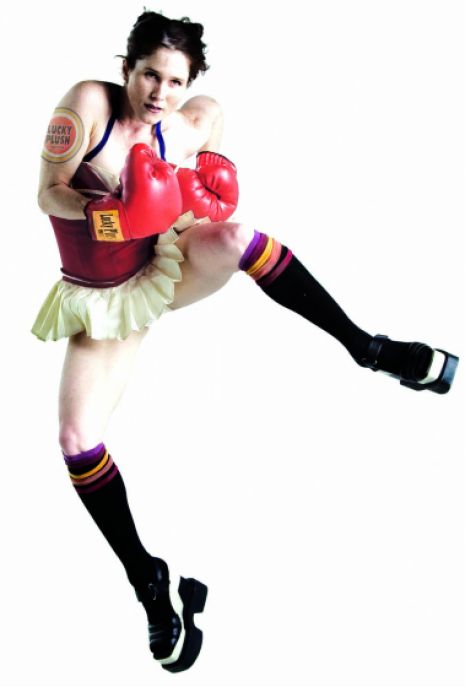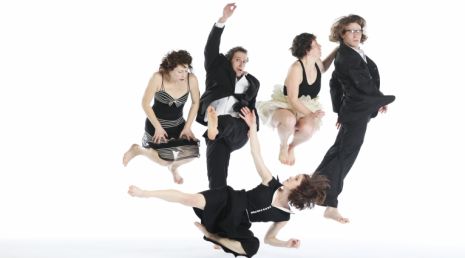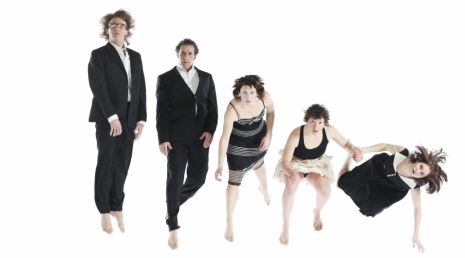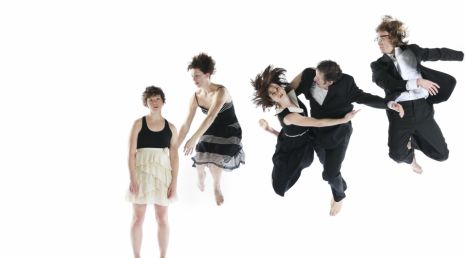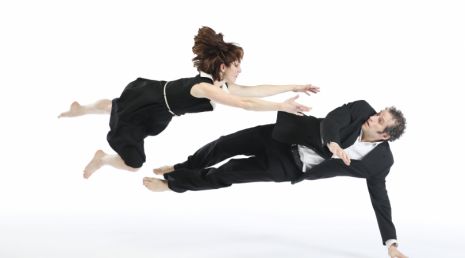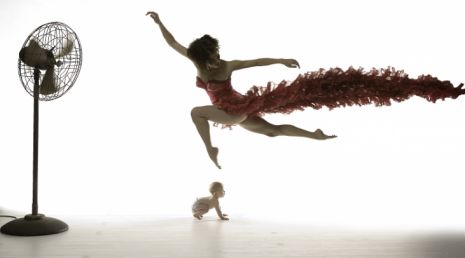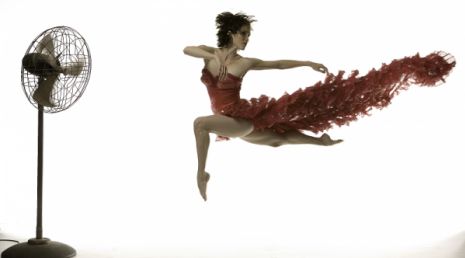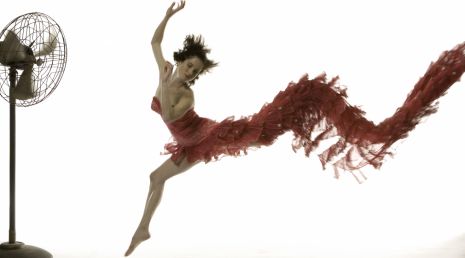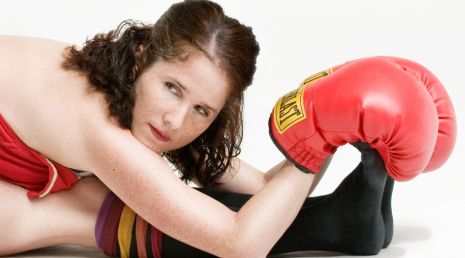Artistic Values
Many of the terms that I use to describe my work are tricky, particularly authenticity and presence. The phenomenology of presence and related issues of authenticity and embodiment are highly debated in many fields including performance, ethnography, anthropology, religious studies, computer science, and others. In my work, presence is about supporting the performers to make choices within a highly crafted structure, and live-ness is about creating contexts in which performers can have affecting experiences onstage.
Though my work with Lucky Plush Productions is rigorously composed – both in choreography and text – it also includes improvisation. The heightened energy and play that occurs when there are unknown elements is what makes live performance so immediate and delicious. I’ve learned that audiences respond to the interplay between the different modes in my work from the relaxed moments that have an improvised feel to the technical choreography that is clearly rehearsed.
Dance often prioritizes executing choreography the same way every time, layering emotional tones onto the work in demonstrative ways. I want my work to breathe differently in every show. Giving the performers permission to be responsive to the live circumstances is a way to reveal their vulnerability and humanity.
The audience is an important player, and my goal is to be generous with them. There is a ‘co-presence’ between audiences and performers - a kinesthetic empathy through which audiences intuitively perceive the difference between authentic presence and rehearsed reactions. Authenticity of presence occurs when performers have genuine reactions to their experiences onstage, as opposed to indicating emotional experiences through dramatic posturing.
I set up circumstances in rehearsals to provoke this authenticity. When rehearsing Cinderbox 18, an evening-length work that I made in 2007, I privately gave each performer discrete tasks to accomplish. One performer could take another’s part in a section, alter the dialogue, propose a song, or something else unexpected to the others. Rehearsing in this way invited the ensemble to listen, respond, take risks, and develop beautiful real-time connections with each other. It also invited them to fail.
Failure is far too hidden in dance, and dancers are trained to see it as a problem. I tell my performers that I love it when they fail. The moment of recognition that they messed up is gorgeously human. While making Cinderbox 18, I worked with a new ensemble member who nervously forgot a movement sequence and wanted to start over again several times. Her vulnerability and frustration was so compelling and relatable that I ended up staging her ‘failure’ into the show. By rehearsing in a manner that invites improvisation and failure into the room, the ensemble builds trust that gives life to the completed work. It can also generate stageworthy material.
Since Cinderbox 18, I’ve continued to use rehearsal methods that disrupt the patterns of each ensemble member and lead to authentic, unscripted experiences. I often layer constraints - such as changing the scale or intention in the movement - to allow performers to make new connections and to help me understand my priorities in the work. Sometimes a simple shift has huge consequences, such as a change in focus. In dance, the focus is often in the back of the eyes, a soft focus that is useful when tracking dynamics, inner sensation, and seeing space more broadly. It can also limit performers in building relationships and seeing what is actually happening around them. I got tired of this focus, which we jokingly refer to as ‘looking at the horizon with love.’ It’s exciting when performers tack between different ways of seeing, and it allows others access to what someone is responding to in the moment.
Accessibility is associated with art that is commercial or market-driven. My goal is to deliver thought-provoking and resonant content that every audience member can connect with on some level. Humor is one of the ways that I facilitate this engagement. Laughter allows audiences to relax and lean forward. I find my particular style of humor in physical comedy or through the playful moments that bubble up as a result of the ensemble being in real-time relationship to each other on stage. I also strive to elicit humor through content that comments on contemporary culture in thoughtful and relatable ways.


